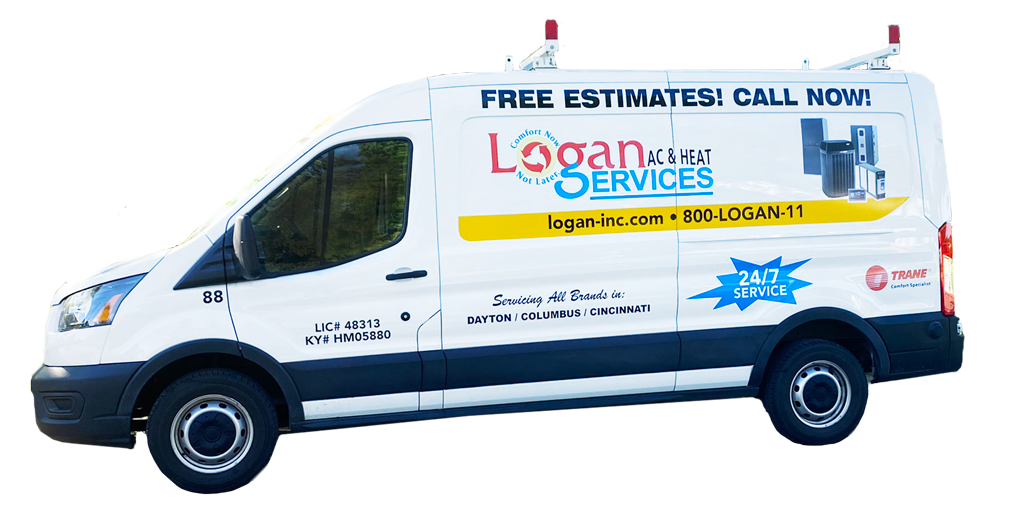A ductless mini split system is an air conditioning unit that doesn’t require air ducts to evenly distribute cooled indoor air throughout your home. DIY installation is extremely challenging and best left to HVAC professionals despite potential cost savings from doing it yourself. The following sections dive deeper into the risks, requirements, processes, and best practices for installing ductless mini-split air conditioning systems.
Ductless Air Conditioning: Overview and Benefits
A ductless or “mini-split” air conditioner is a system made up of an outdoor compressor connected to one or more indoor units mounted on walls or ceilings without requiring air ducts running through your home. Ductless mini split air conditioning systems cool and dehumidify by efficiently circulating refrigerant between the strategically placed exterior and interior units.
Key advantages compared to traditional central ACs include:
- Higher energy efficiency from zoned cooling of only occupied spaces
- Individual remote control temperature adjustments for each room
- Flexible installation locations since no ductwork is required
- Quiet operation from separated components
- Combo heating and cooling units available
- Works in houses lacking existing ducts
- Reduced allergen circulation without ducts spreading throughout the home
For spaces with uneven temperatures that are difficult to keep comfortable year-round with window AC units or a central HVAC system, ductless mini split air conditioners can be the optimal, cost-effective indoor comfort solution.
Read our guides, Exploring the Inner Workings of Ductless AC and Unveiling the Benefits of Ductless AC Technology, for more information.
Key Things to Know Before Attempting a DIY Installation
Choosing a DIY ductless air conditioner installation to save on labor costs may seem appealing. However, this demanding process requires specialized skills and involves significant safety hazards. Before deciding to try it yourself, carefully consider the risks versus potential rewards:
- You’ll need expertise in refrigerant handling, copper pipe brazing, and high-voltage electrical work – lacking knowledge in any area can cause systemic problems or dangerous malfunctions over time.
- Real dangers include lung/skin damage from gases, electric shocks, falls, and strains from moving heavy equipment.
- Completing a proper installation is measured in weeks of preparation and full days of intense physical labor – attempting to cut corners or rush amplifies risks exponentially.
- Upfront cost savings from DIY can easily be erased in the long term by repairs or full replacement of failing systems installed incorrectly.
In most cases, attempting a DIY ductless installation fails to deliver worthwhile cost or functionality rewards compared to hiring professional HVAC services. Leverage qualified experts to mitigate safety hazards while benefiting from greater system efficiency and longevity from their specialized skills and training.
Necessary Tools, Equipment, and Materials
Ductless mini split installation requires procuring an extensive set of specialty HVAC tools and equipment plus all the main system components. Assembling everything needed while ensuring compatibility presents a major challenge.
Necessities include:
- Vacuum pump, refrigeration gauges, voltage meter
- Pipe cutting/brazing equipment, lifting equipment
- Condensate pump, refrigerant recovery system
- Protective equipment
- Outdoor compressor/condenser
- Indoor evaporator unit(s)
- Refrigerant piping/filters/lubricants
- Condensate drainage pipes
- Mounting hardware
And more. Obtaining professional-grade versions of the necessary equipment and parts will be difficult and requires thorough research into the specific brands and models you decide to utilize. This further complicates DIY installations.
Step-by-Step Ductless Air Conditioner Installation Process
While summaries of the installation process may sound straightforward in writeups, the actual hands-on completion of each phase involves countless variables and opportunities for errors. The precise methodology is also unique to each specific air conditioner model and layout for your home. Consult the exact specifications of the manufacturer before attempting installation.
- Choose Equipment Location: Consider room size, layout, and other factors when picking locations for the outdoor compressor unit and indoor evaporator heads per manufacturer recommendations.
- Install Mounting Equipment: Use wall brackets, stands, or suspended vibration isolators to mount the indoor and outdoor units securely. Ensure they are level, stable, and meet clearance requirements.
- Connect Refrigerant Piping: Measure, cut, and deburr copper pipes to connect the evaporator head(s) to the outdoor condenser. Take extreme care of brazing connections to avoid leaks. Ensure pipe routes meet guidelines.
- Make Electrical Connections: Confirm electrical load capabilities meet system requirements. Then, run wiring through conduits from the electrical panel to the outdoor unit and indoor head(s) according to local codes.
- Perform Vacuum and Refrigerant Charge: A vacuum pump removes moisture and non-condensable gases from the refrigerant lines. Confirm there are no leaks before releasing refrigerant into the system at the precisely specified amount.
- Test System Operation: Power on the ductless air conditioner to test all modes and functions. Verify the evaporator units are properly cooling the rooms. Check for any sensor errors or strange sounds indicating issues.
As evidenced by the multifaceted steps involved, successfully installing a ductless system yourself boils down to mastering complex skills like refrigerant handling, electrical work, fluid dynamics, and beyond. Even minor issues in any installation phase can cause larger problems affecting performance, efficiency, and safety. Work carefully through checklists, and don’t gloss over details before consulting with experts.
Post-Installation Considerations
Even after completing the demanding installation process, properly configuring, operating, and maintaining your new ductless system requires ongoing effort and HVAC expertise. Don’t assume your role ends once the physical unit is mounted.
Ongoing considerations include:
- Configure Thermostat Settings: Sync the wireless remote control to indoor head(s) to adjust fan speeds, modes, target temperatures, and other preferences. Program timer and schedule functions if desired.
- Establish Maintenance Routines: To sustain peak operation, routinely clean air filters, clear debris from outdoor units, confirm adequate drainage, and have a professional technician conduct annual check-ups.
- Diagnose Operational Problems: If your newly installed ductless AC suffers from a lack of cooling, strange noises, or error codes, methodically troubleshoot before determining if professional service is needed.
- Leverage HVAC Experts When Required: For complex ductless air conditioner repairs, refrigerant issues, or major problems–don’t hesitate to hire a certified HVAC technician to service the system properly.
Be diligent about regularly maintaining any ductless air conditioning system you install, and don’t delay calling HVAC pros at the first sign of operational problems. Preventative care and quick issue resolution lead to optimal performance and equipment longevity.
Why HVAC Expertise is Essential for Ductless Installation
Attempting to install ductless air conditioning without professional HVAC expertise often leads to underperformance, safety issues, and premature system failures down the road. There are clear reasons to leverage certified technicians instead of DIY efforts:
Extensive Training and Certification
Reputable HVAC contractors complete intensive training programs focused specifically on working with ductless mini-split units before becoming certified technicians. DIYers lack this specialized knowledge and hands-on experience.
Licenses and Compliance Knowledge
Qualified HVAC professionals hold active and up-to-date licenses, bonds, and liability insurance, validating their qualifications. They also possess working knowledge of the local building codes and regulations for air conditioning systems to ensure full compliance during installation. Ignore these at your own risk.
Reduced Risk of Hazardous Situations
Perhaps most importantly, entrusting your ductless air conditioning installation to expert HVAC contractors dramatically reduces the potential for dangerous electrical faults, gas leaks, fluid spills, improperly mounted equipment falling, mold development, or lung damage from mishandled refrigerants that can occur with DIY installations. Mitigating these threats is invaluable for home safety and avoiding disastrous liability risks.
Higher Long-Term Return on Investment
While higher upfront labor costs are involved with hiring HVAC pros than DIY, it almost always pays off exponentially over years of optimized performance efficiency, minimized repair costs, and extended equipment lifespan resulting from expert workmanship.
The Logan Difference
When it comes to installing complex ductless air conditioning systems properly, few HVAC companies can match the expertise and commitment to customer satisfaction of Logan A/C & Heat Services. As a family-owned business serving Ohio communities since 1969, Logan has installed countless AC units over the decades. Our teams are highly trained and experienced, specifically with cutting-edge ductless systems to optimize your home’s design, efficiency, zoning, and performance.
Beyond technical competency, Logan prioritizes treating each customer like family throughout the process. We take time to carefully understand your needs, answer all questions, and ensure you feel comfortable with each step, from selecting the right Mitsubishi or other quality brand ductless system to positioning the air handler units in each room.
Once your new ductless mini-split AC installation is complete, you can rely on Logan for ongoing maintenance and lightning-fast repairs if ever needed. Our capable staff are ready and eager to assist so you can enjoy consistent comfort and cost savings from your system for years. Contact Logan A/C & Heat Services today to schedule your consultation or get a free estimate.
Frequently Asked Questions
What are the pros and cons of installing a ductless system myself versus hiring an HVAC company?
The lower initial cost is the only real “pro” of self-installed ductless ACs. However, the risks and long-term costs outweigh any savings. Hiring a reputable pro ensures proper design, zoning, safety, efficiency, longevity, and support.
What routine maintenance does a ductless air conditioner require?
To sustain efficient performance and longevity of your ductless AC without frequent repairs, be diligent about replacing air filters, clearing debris that blocks exterior unit airflow, confirming condensate drains properly, and hiring an HVAC pro for annual check-ups.
How can I tell if my ductless AC was installed incorrectly?
Warning signs of improper installation include short-cycling or inadequate cooling, leaking refrigerant lines, excessive noise and vibration, improper drainage leading to water leaks, error codes on indoor unit displays, sensors not reading ambient temperature correctly, and just generally poor or uneven cooling performance signaling design issues.

















